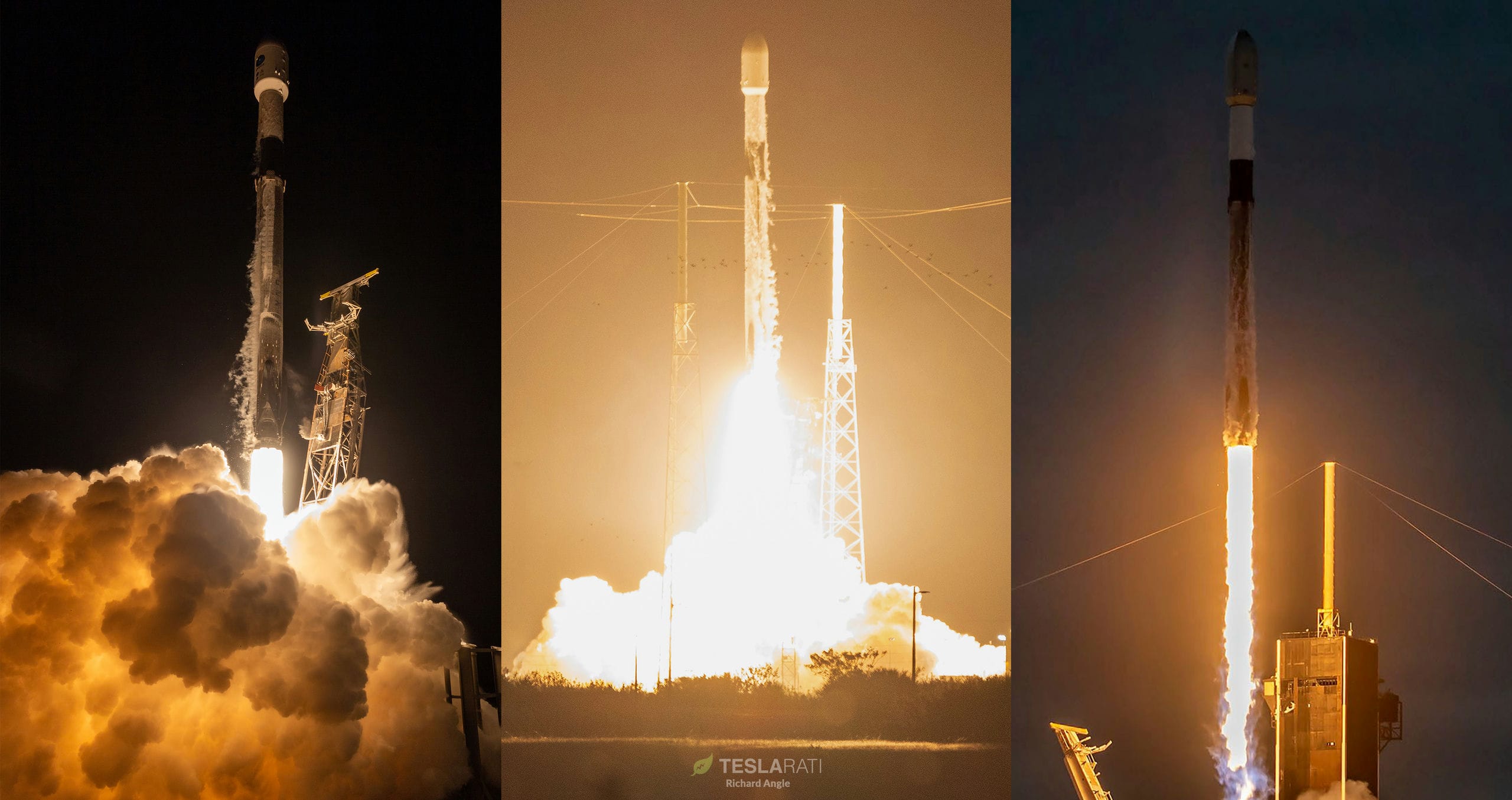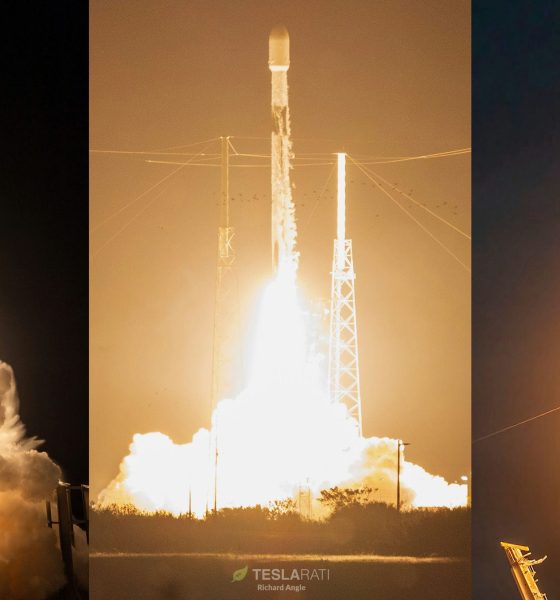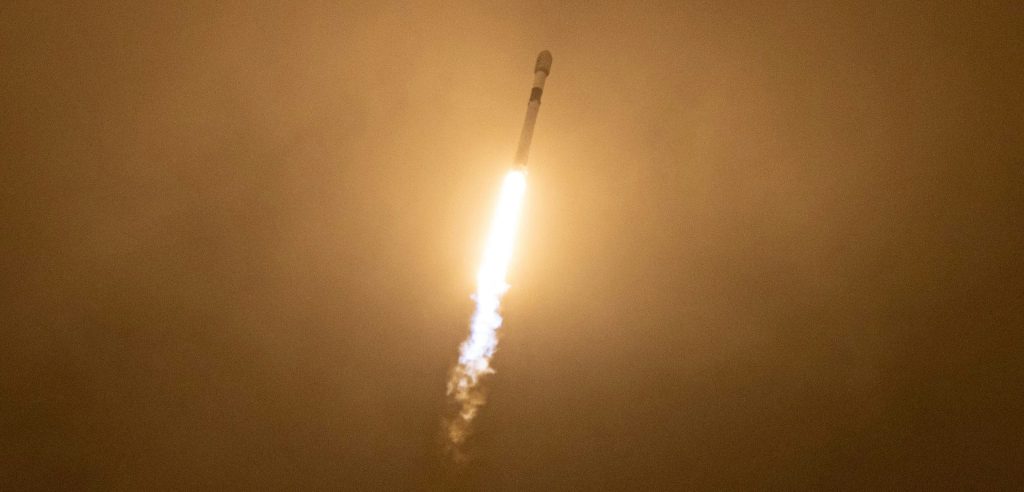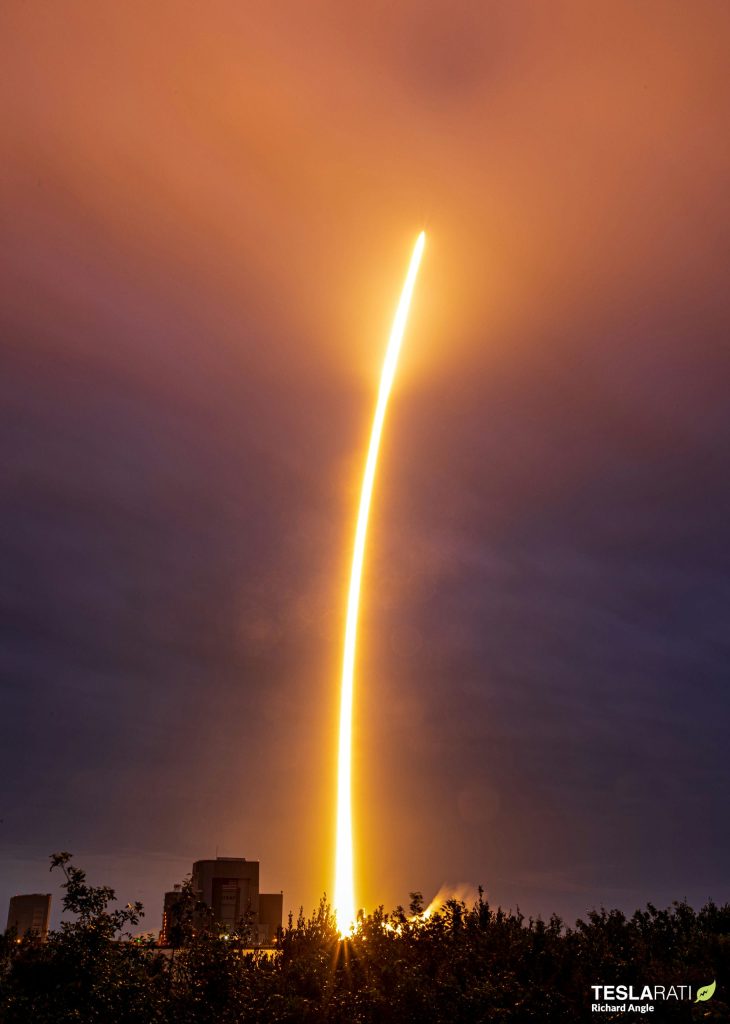

News
SpaceX aces three Falcon 9 launches in 34 hours
SpaceX has successfully launched three Falcon 9 rockets less than 34 hours apart, leaving the company only one mission shy of CEO Elon Musk’s ambitious target of 60 launches in 2022.
The period was almost even more intense, with two launches briefly scheduled minutes apart and all three set to launch in the space of 10-11 hours. But the more conservative sequencing SpaceX ultimately settled on still produced impressive results and allowed the company to break its own world record for the fastest time to complete three launches of the same rocket. In June 2022, SpaceX managed three similar launches – a Starlink mission, a scientific Earth observation satellite, and a commercial communications satellite – in 36 hours and 18 minutes.
Six months later, SpaceX has shaved more than two hours off of its own feat with the successful launches of another Earth observation satellite, a pair of commercial communications satellites, and 54 Starlink satellites in 33 hours and 46 minutes.
The update that's rolling out to the fleet makes full use of the front and rear steering travel to minimize turning circle. In this case a reduction of 1.6 feet just over the air— Wes (@wmorrill3) April 16, 2024
SpaceX’s latest hat trick began on December 16th with a Falcon 9 launch of the joint US-French Surface Water and Ocean Topography (SWOT) mission out of Vandenberg Space Force Base (VSFB), California. Delayed from December 12th and 15th, the launch was nonetheless a perfect success, placing the 2.2-ton (~4850 lb) radar satellite into a low Earth orbit that will allow it to precisely analyze virtually every inch of exposed water on Earth. That unprecedented capability should make it easier for scientists to study and understand Earth’s water cycle, as well as humanity’s substantial impact on those processes.
A little over 11 hours later, a second Falcon 9 rocket lifted off from SpaceX’s Cape Canaveral Space Force Station LC-40 pad carrying the first two Boeing-built O3b mPOWER satellites for satcom provider SES. Once again, SpaceX’s workhorse rocket did its job perfectly, even managing to exceed its contracted parameters according to SES CEO Steve Collar. Falcon 9’s better-than-expected performance will reduce the amount of time and propellant each 1.7-ton (~3750 lb) mPOWER satellite requires to reach its operational orbit, potentially ensuring a quicker path to revenue generation and longer useful lifespans.
SpaceX is on contract to launch all 11 initial mPOWER satellites. The next nine satellites will head to orbit sometime in 2023 and 2024 as Boeing completes them.


Finally, less than a day later after O3b mPOWER 1&2, a third Falcon 9 rocket lifted off from SpaceX’s NASA Kennedy Space Center LC-39A pad (just a few miles north of LC-40) with what could be the last full batch of “Group 4” Starlink V1.5 satellites. SpaceX’s first-generation Starlink constellation is comprised of five groups of satellites operating in distinct orbital ‘shells,’ and the company’s December 18th launch of Starlink 4-37 will leave SpaceX just 14 satellites away from fully finishing the second of two shells of 1584 satellites. All told, Starlink 4-37 was SpaceX’s 65th operational Starlink launch since November 2019 and the company likely has just ~20 launches to go to complete its first satellite constellation – already the largest in history by an order of magnitude.
All three launches were completed in less than a day and a half. Further emphasizing the breadth of SpaceX’s expertise, each Falcon 9 booster successfully landed after supporting their respective orbital launch, ensuring that those boosters will all be able to support more launches in the near future. In fact, Starlink 4-37 was the 15th mission for its Falcon 9 booster, B1058, breaking SpaceX’s internal reuse record and pushing the technology’s envelope. It remains to be seen if the company will push beyond 15 flights. In June 2022 interviews with Aviation Week, SpaceX executives stated that Falcon boosters would be retired after 15 flights – a big change from past indications that there was nothing preventing each booster from launching 100+ times with regular maintenance.
Starlink 4-37 was also SpaceX’s 59th successful orbital launch of 2022. In March, CEO Elon Musk raised an earlier annual target of 52 launches to 60 launches. At the time, 60 launches in one year was almost inconceivable. Set in 1980, the all-time record for a family of rockets (the Russian R-7) is 61 successful launches in one calendar year.
But against all odds, SpaceX has relentlessly executed week after week and sustained an average of one launch every six days for more than 12 months. Multiple sources currently indicate that SpaceX has two more Falcon 9 launches scheduled this year: another Starlink mission as early as December 28th and a mission carrying the Israeli EROS-C3 Earth imaging satellite on December 29th. SpaceX’s Falcon rocket family thus has a chance to tie the all-time record of 61 R-7 family launches, which was backed by the entire Soviet Union at the peak of its national launch cadence.

News
Tesla is seeing a lot of momentum from young Koreans in their 20s-30s: report
From January to November, young buyers purchased over 21,000 Teslas, putting it far ahead of fellow imported rivals like BMW and Mercedes-Benz.

Tesla has captured the hearts of South Korea’s 20s-30s demographic, emerging as the group’s top-selling imported car brand in 2025. From January to November, young buyers purchased over 21,000 Teslas, putting it far ahead of fellow imported rivals like BMW and Mercedes-Benz.
Industry experts cited by The Economist attributed this “Tesla frenzy” to fandom culture, where buyers prioritize the brand over traditional car attributes, similar to snapping up the latest iPhone.
Model Y dominates among young buyers
Data from the Korea Imported Automobile Association showed that Tesla sold 21,757 vehicles to the 20s-30s demographic through November, compared to BMW’s 13,666 and Mercedes-Benz’s 6,983. The Model Y led the list overwhelmingly, with variants like the standard and Long Range models topping purchases for both young men and women.
Young men bought around 16,000 Teslas, mostly Model Y (over 15,000 units), followed by Model 3. Young women followed a similar pattern, favoring Model Y (3,888 units) and Model 3 (1,083 units). The Cybertruck saw minimal sales in this group.
The Model Y’s appeal lies in its family-friendly SUV design, 400-500 km range, quick acceleration, and spacious cargo, which is ideal for commuting and leisure. The Model 3, on the other hand, serves as an accessible entry point with lower pricing, which is valuable considering the country’s EV subsidies.
The Tesla boom
Experts described Tesla’s popularity as “fandom culture,” where young buyers embrace the brand despite criticisms from skeptics. Professor Lee Ho-geun called Tesla a “typical early adopter brand,” comparing purchases to iPhones.
Professor Kim Pil-soo noted that young people view Tesla more as a gadget than a car, and they are likely drawn by marketing, subsidies, and perceived value. They also tend to overlook news of numerous recalls, which are mostly over-the-air software updates, and controversies tied to the company.
Tesla’s position as Korea’s top import for 2025 seems secured. As noted by the publication, Tesla’s December sales figures have not been reported yet, but market analysts have suggested that Tesla has all but secured the top spot among the country’s imported cars this year.
News
Tesla FSD fleet is nearing 7 billion total miles, including 2.5 billion city miles
As can be seen on Tesla’s official FSD webpage, vehicles equipped with the system have now navigated over 6.99 billion miles.

Tesla’s Full Self-Driving (Supervised) fleet is closing in on almost 7 billion total miles driven, as per data posted by the company on its official FSD webpage.
These figures hint at the massive scale of data fueling Tesla’s rapid FSD improvements, which have been quite notable as of late.
FSD mileage milestones
As can be seen on Tesla’s official FSD webpage, vehicles equipped with the system have now navigated over 6.99 billion miles. Tesla owner and avid FSD tester Whole Mars Catalog also shared a screenshot indicating that from the nearly 7 billion miles traveled by the FSD fleet, more than 2.5 billion miles were driven inside cities.
City miles are particularly valuable for complex urban scenarios like unprotected turns, pedestrian interactions, and traffic lights. This is also the difference-maker for FSD, as only complex solutions, such as Waymo’s self-driving taxis, operate similarly on inner-city streets. And even then, incidents such as the San Francisco blackouts have proven challenging for sensor-rich vehicles like Waymos.
Tesla’s data edge
Tesla has a number of advantages in the autonomous vehicle sector, one of which is the size of its fleet and the number of vehicles training FSD on real-world roads. Tesla’s nearly 7 billion FSD miles then allow the company to roll out updates that make its vehicles behave like they are being driven by experienced drivers, even if they are operating on their own.
So notable are Tesla’s improvements to FSD that NVIDIA Director of Robotics Jim Fan, after experiencing FSD v14, noted that the system is the first AI that passes what he described as a “Physical Turing Test.”
“Despite knowing exactly how robot learning works, I still find it magical watching the steering wheel turn by itself. First it feels surreal, next it becomes routine. Then, like the smartphone, taking it away actively hurts. This is how humanity gets rewired and glued to god-like technologies,” Fan wrote in a post on X.
News
Tesla starts showing how FSD will change lives in Europe
Local officials tested the system on narrow country roads and were impressed by FSD’s smooth, human-like driving, with some calling the service a game-changer for everyday life in areas that are far from urban centers.

Tesla has launched Europe’s first public shuttle service using Full Self-Driving (Supervised) in the rural Eifelkreis Bitburg-Prüm region of Germany, demonstrating how the technology can restore independence and mobility for people who struggle with limited transport options.
Local officials tested the system on narrow country roads and were impressed by FSD’s smooth, human-like driving, with some calling the service a game-changer for everyday life in areas that are far from urban centers.
Officials see real impact on rural residents
Arzfeld Mayor Johannes Kuhl and District Administrator Andreas Kruppert personally tested the Tesla shuttle service. This allowed them to see just how well FSD navigated winding lanes and rural roads confidently. Kruppert said, “Autonomous driving sounds like science fiction to many, but we simply see here that it works totally well in rural regions too.” Kuhl, for his part, also noted that FSD “feels like a very experienced driver.”
The pilot complements the area’s “Citizen Bus” program, which provides on-demand rides for elderly residents who can no longer drive themselves. Tesla Europe shared a video of a demonstration of the service, highlighting how FSD gives people their freedom back, even in places where public transport is not as prevalent.
What the Ministry for Economic Affairs and Transport says
Rhineland-Palatinate’s Minister Daniela Schmitt supported the project, praising the collaboration that made this “first of its kind in Europe” possible. As per the ministry, the rural rollout for the service shows FSD’s potential beyond major cities, and it delivers tangible benefits like grocery runs, doctor visits, and social connections for isolated residents.
“Reliable and flexible mobility is especially vital in rural areas. With the launch of a shuttle service using self-driving vehicles (FSD supervised) by Tesla in the Eifelkreis Bitburg-Prüm, an innovative pilot project is now getting underway that complements local community bus services. It is the first project of its kind in Europe.
“The result is a real gain for rural mobility: greater accessibility, more flexibility and tangible benefits for everyday life. A strong signal for innovation, cooperation and future-oriented mobility beyond urban centers,” the ministry wrote in a LinkedIn post.








